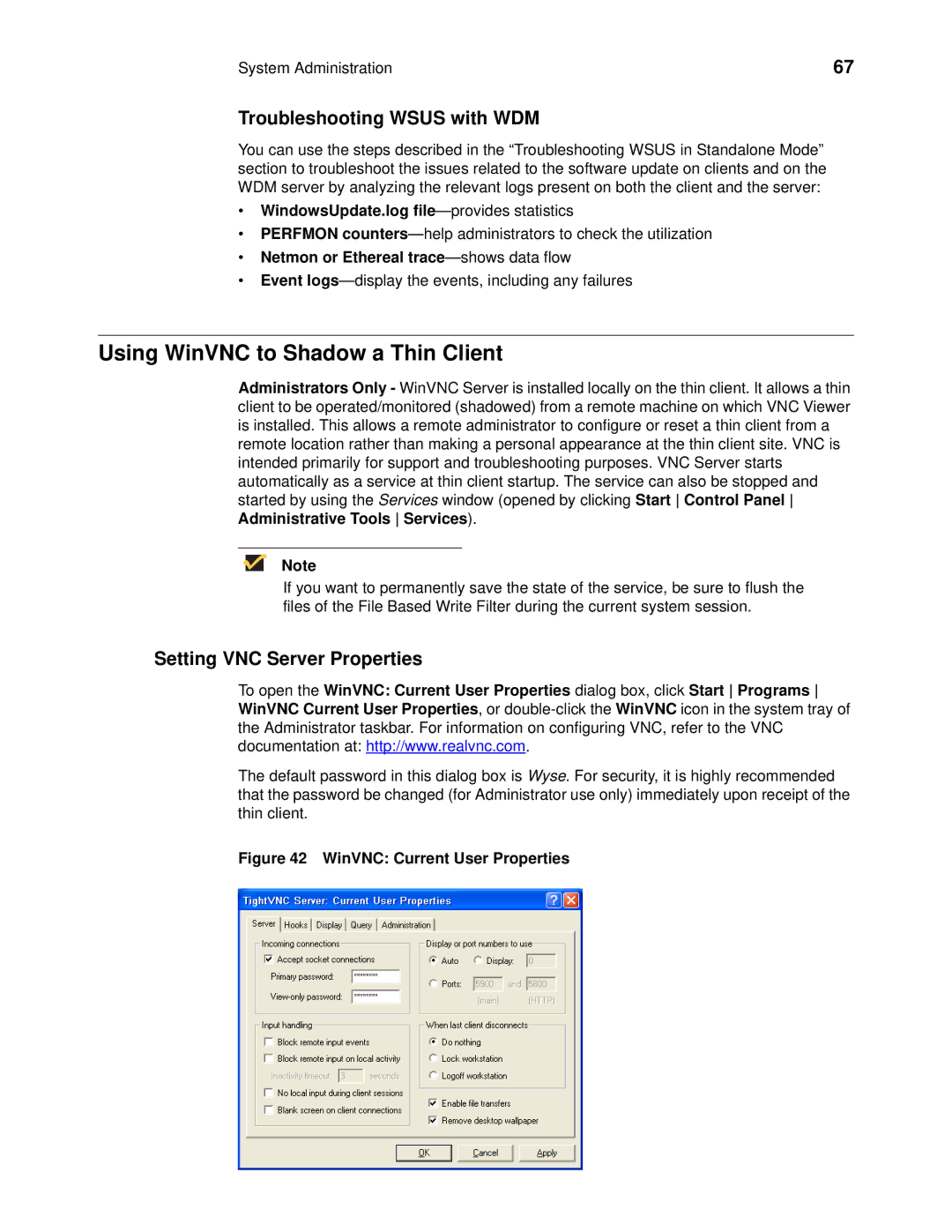
System Administration | 67 |
Troubleshooting WSUS with WDM
You can use the steps described in the “Troubleshooting WSUS in Standalone Mode” section to troubleshoot the issues related to the software update on clients and on the WDM server by analyzing the relevant logs present on both the client and the server:
•WindowsUpdate.log file—provides statistics
•PERFMON
•Netmon or Ethereal trace—shows data flow
•Event
Using WinVNC to Shadow a Thin Client
Administrators Only - WinVNC Server is installed locally on the thin client. It allows a thin client to be operated/monitored (shadowed) from a remote machine on which VNC Viewer is installed. This allows a remote administrator to configure or reset a thin client from a remote location rather than making a personal appearance at the thin client site. VNC is intended primarily for support and troubleshooting purposes. VNC Server starts automatically as a service at thin client startup. The service can also be stopped and started by using the Services window (opened by clicking Start Control Panel Administrative Tools Services).
Note
If you want to permanently save the state of the service, be sure to flush the files of the File Based Write Filter during the current system session.
Setting VNC Server Properties
To open the WinVNC: Current User Properties dialog box, click Start Programs WinVNC Current User Properties, or
The default password in this dialog box is Wyse. For security, it is highly recommended that the password be changed (for Administrator use only) immediately upon receipt of the thin client.
